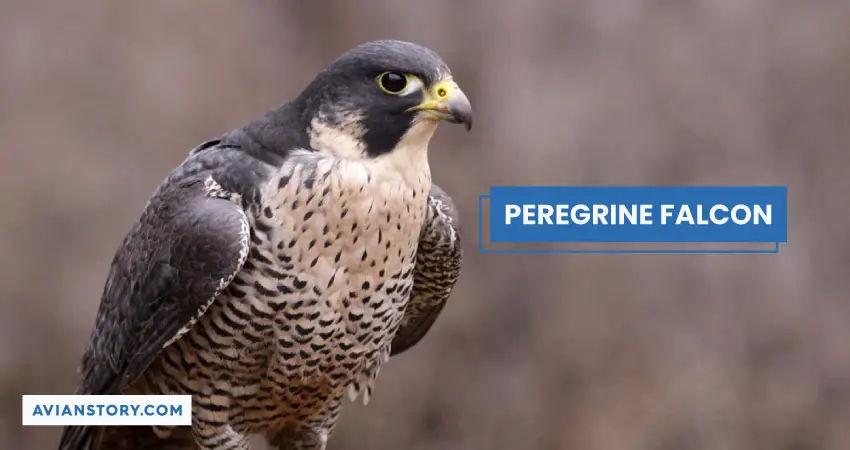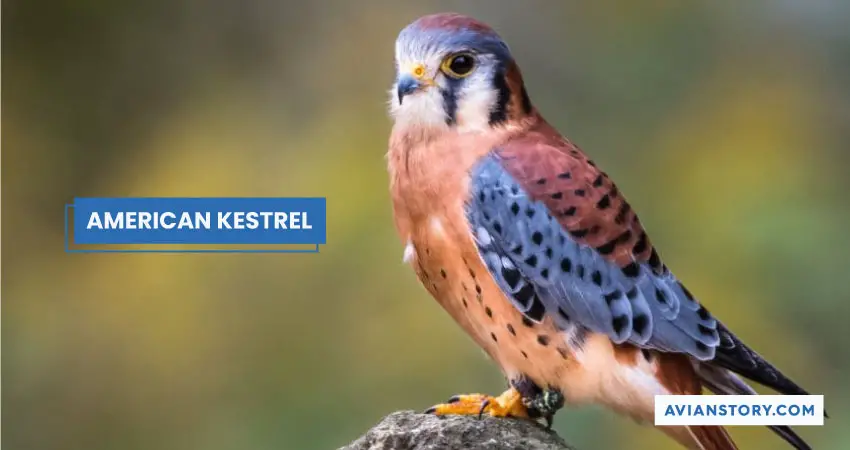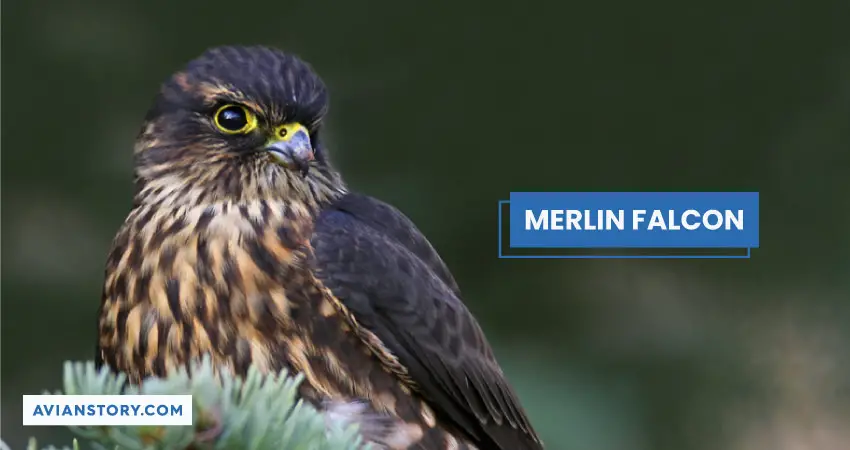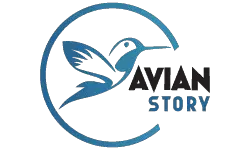5 Types Falcons In Utah: The State’s Aerial Hunters!
Falcons, a formidable group of bird species, are recognized for their exceptional predatory skills, high-speed flight, and keen vision. Their role as birds of prey, also known as raptors, is pivotal in maintaining ecological equilibrium. These birds are equipped with remarkable adaptations such as hooked beaks and agile hunting abilities. Utah, a state in the United States, provides an array of diverse habitats, home to five distinct species of falcons – the American Kestrel, Prairie Falcon, Peregrine Falcon, Merlin, and Gyrfalcon.
This information about falcons in Utah is gleaned from the extensive research conducted by various organizations including HawkWatch International and the Utah Division of Wildlife Resources. Their studies offer a comprehensive understanding of these falcons’ behaviors, adaptations, and the critical need for their conservation. This article provides an in-depth look at these species, highlighting their unique attributes, the influences of Utah’s climate on their behaviors, the challenges they face, and the active efforts for their preservation.
Understanding these majestic creatures underscores their integral role in our ecosystem and accentuates the importance of our contribution to their survival. As we navigate through the lives of falcons in Utah, we become increasingly aware of nature’s interconnectedness and the shared duty we have in its safeguard.
What Falcon Species are Found in Utah?
Considering that Utah is a mountain state, you will most definitely find several species of falcon here. Apart from being one of the fastest types of birds in the world, there are many amazing things about falcons and their different species.
Here are the 5 types of falcons you will commonly find in the Utah mountain state:
- Peregrine Falcon (Falco peregrinus)
- American Kestrel (Falco sparverius)
- Merlin (Falco columbarius)
- Prairie Falcon (Falco mexicanus)
- Gyrfalcon (Falco rusticolus)
1. Peregrine Falcon (Falco peregrinus)

| Features | Male | Female |
| Size | 14.2-16.1 inches | 16.5-19.3 inches |
| Wingspan | 37.4-41.3 inches | 41.3-45.3 inches |
| Weight | 18.7-26.5 oz | 32.1-48.1 oz |
| Colors | Blue-gray back and wings, white underparts with dark spots | Similar to males, but slightly larger in size |
Peregrine falcons can be distinguished by their blue-grey back and head with horizontal plumage on the breast. The females are about 30% larger in size compared to males. Younger peregrine falcons appear brownish in color rather than grey.
Their underparts are barred, usually in shades of white, dark brown, and black. The top part of the beak (known as the cere) is yellow like their feet, while the tip of the beak and talons are black. A sharp curve ends at the tip of the beak, allowing the shape to kill the prey from the spinal cord directly.
The peregrine falcon holds the status of being the fastest bird in the world! They can reach a speed of up to 200 miles per hour, which is more than a cheetah can achieve.
Peregrine falcons are carnivorous and eat other small birds, such as pigeons. Before grabbing their prey, this falcon flies around straight for nearly half a mile and then makes a sudden, sharp stoop to catch the prey with their claws.
Falcons have super-vision powers. Meaning, they can see about eight times clearer and sharper than human eyes can. They also have an additional eyelid that moves vertically, which helps to create a better focus on the prey while hunting.
2. American Kestrel (Falco sparverius)

| Features | Male | Female |
| Size | 8-12 inches | 9-13 inches |
| Wingspan | 20-24 inches | 21-25 inches |
| Weight | 2.8-4.1 oz | 3.1-4.2 oz |
| Colors | Rufous back, Blue-gray wings | Rufous back, streaked with dark brown |
This type of falcon is easy to distinguish because of its small size. Female kestrels have a rusty brown shade on their head, back, and wings, while males have contrasting blue-grey heads.
American kestrels have a light body that helps them to maneuver their flight and with comparatively strong and heavy claws and beaks.
The most distinguishable part of this falcon is the dark marking they have on each side of its face. It is possible that these exist to confuse larger predators, for they appear as “false eyes”.
American kestrels are the most common bird of prey that hunters use in falconry as they are easy to train. These birds are carnivores and typically feed on large insects, rodents, and smaller birds.
Despite being a bird of prey, American kestrels can easily fall prey to larger predators because of their small size. They have to work with extra stealth to hide from bigger birds and even snakes.
3. Merlin (Falco columbarius)

| Features | Male | Female |
| Size | 9.4-11.8 inches | 11.4-13 inches |
| Wingspan | 20.9-26.8 inches | 23.6-27.2 inches |
| Weight | 5.6-7.7 oz | 6.7-8.5 oz |
| Colors | Blue-gray to blackish back and wings, pale underparts with thin streaks | Dark brown back and wings, whitish to buffy underparts with brown streaks |
Merlin falcons are very small but are extremely fierce! Their plumage is usually light to dark brown in color.
Merlins have a sharp and distinctive call, which is very shrill. Along with small birds, their diet consists of rodents, dragonflies, reptiles, and bats. They are strong fliers, and you can most likely catch these flying in Utah during winter.
These birds were also known as “pigeon hawks” and were popular among noblemen and women during the medieval period for hunting skylarks.
4. Prairie Falcon (Falco mexicanus)
| Features | Male | Female |
|---|---|---|
| Size | 14.6-16.9 inches | 16.5-18.5 inches |
| Wingspan | 36-43 inches | 40-46 inches |
| Weight | 16.6-27.3 oz | 22.6-38.8 oz |
| Colors | Sandy brown back and wings, white underparts with dark spots | Similar to males, but slightly larger in size |
Prairie falcons have gorgeous plumage in grayish brown, with a white breast and underside covered with brown dots. A striking dark outline covers the edges of the inside of the wings. The giant wingspan would be hard to miss in the air if you are in Utah.
These raptors are extremely protective of their nests and will kill any creature in the way that they think serves as a threat. Although these birds are big in size, it can sometimes be hard to spot them as they are very quick and always on the move. You will rarely find them perching on a tree or building.
Small mammals are a common diet for prairie falcons. Their preys include gophers, squirrels, prairie dogs, and even rabbits.
To increase their coordination skills, prairie falcons like to “play” by dropping small things from above and then diving to catch them.
5. Gyrfalcon (Falco rusticolus)
| Features | Male | Female |
|---|---|---|
| Size | 19-23 inches | 20-25 inches |
| Wingspan | 43-51 inches | 48-63 inches |
| Weight | 31-60 oz | 49-74 oz |
| Colors | Varied color phases from white to dark gray, all with dark spotting | Similar to males, but slightly larger in size |
By looking at the profile information, you can already tell how big these raptors are. In fact, gyrfalcons are the largest species of falcon in the world.
The colors of their feather can vary. They appear all white, silver, grey, and also brown, and grey-black with small markings all over their wings and underparts.
Gyrfalcons usually breed in colder areas such as Alaska and other countries in the north. They will typically eat any game they are able to hunt but usually go for medium-sized mammals and birds.
Mostly, these raptors eat birds such as ptarmigans, pheasants, hawks, and even other smaller species of the falcon!
Another known characteristic about gyrfalcons is that they mate for life. So basically, they are “married” and do not pursue another mate unless one of them dies.
Despite their large size, gyrfalcons are common in falconry and are very clever hunters when trained properly. In medieval times, they were considered to be a royal type of bird.
Where can you Spot Falcons in Utah?
While Falcons can be seen throughout Utah, some locations are particularly popular for falcon spotting. These places are often part of their preferred habitat or regions that offer an abundance of their preferred prey.
- Antelope Island State Park: Known for its abundant wildlife, this state park is a popular spot for bird watchers and hosts several falcon species.
- Great Salt Lake: The vast open landscapes and abundant prey make this area popular among many species of falcons.
- Zion National Park: The park’s high cliffs are ideal for nesting falcons, making it a great place to observe these birds.
Utah’s urban areas, particularly Salt Lake City, have also become unexpected habitats for these birds. The presence of tall buildings mimicking the high cliffs for nesting, coupled with an easy food supply – often in the form of pigeons – has made these regions an attractive habitat for some falcon species.
How are Falcons Adapted to Utah’s Environment?
Falcons in Utah have developed fascinating adaptations to thrive in this region’s diverse environment. From physical attributes that aid in hunting to behavioral traits that help them survive Utah’s extreme temperatures, these adaptations make falcons a captivating subject of study.
Physical Adaptations of Falcons
- Powerful Beak: Falcons possess a strong, hooked beak designed for tearing flesh, an adaptation essential for their carnivorous diet.
- Sharp Talons: Equipped with sharp talons, falcons can firmly grasp their prey during the high-speed stoop, a distinctive hunting strategy.
- Keen Eyesight: Their excellent vision enables them to spot prey from great heights.
Behavioral Adaptations in Falcons
Behavioral adaptations are equally crucial for survival. Some falcons have adapted to urban environments, capitalizing on the abundance of easy prey. Others have adjusted their hunting times to early morning or late evening to avoid the scorching heat during summer.
Utah’s falcons also participate in fascinating breeding behaviors, with pairs often engaging in impressive aerial displays.
How Does Utah’s Climate Influence Falcon Behaviors?
Utah’s climate, characterized by cold winters and hot, dry summers, greatly influences the behavior of its resident falcons. From migration patterns to breeding and feeding habits, the local climate shapes the life cycle of these raptors.
Impact of Seasonality on Falcon Breeding and Feeding Patterns
Breeding season in Utah typically begins in spring when temperatures start to rise. This is also when food resources become more abundant, increasing the chances of chick survival.
Falcons adjust their feeding habits based on seasonal availability of prey. For example, during winter, when small mammals are scarce, they may rely more heavily on birds.
Falcon Migratory Patterns influenced by Utah’s Climate
While some falcon species in Utah are year-round residents, others, like the Peregrine Falcon, migrate to warmer regions during winter. They return to Utah in the spring for breeding.
| Species Name | Winter Migration to | Year-round availability |
| Peregrine Falcon | West and South-east states | States near and including Utah, Nevada, Arizona |
| American Kestrel | States near the Gulf of Mexico | All over the country |
| Merlin | West and Central America | Northern states (Wyoming, Montana) and Canada |
| Prairie Falcon | Central America | Western states (Utah, California, Nevada, Arizona) |
| Gyrfalcon | Northern states and Canada | Alaska and northern hemisphere countries |
What Threats do Falcons Face in Utah?
Despite their adaptability, falcons in Utah face several threats. These range from habitat loss due to urbanization to climate change implications, which can disrupt their life cycles.
Urbanization leads to habitat loss, a significant threat to many wildlife species, including falcons. Ironically, some species like the Peregrine Falcon have adapted to urban life, with cityscapes providing ample nesting sites and food resources.
Climate change poses an existential threat to many species globally. For falcons in Utah, rising temperatures can disrupt breeding cycles and availability of prey, potentially impacting their survival rates.
What Conservation Efforts are in Place for Falcons in Utah?
In response to the threats faced by falcons, several conservation efforts are in place in Utah. These include legal protections, rehabilitation and reintroduction programs, and initiatives by non-profit organizations.
Under the Migratory Bird Treaty Act, all falcon species are protected in the United States, including Utah. This protection makes it illegal to kill, capture, collect, or sell falcons without a permit.
The Utah Division of Wildlife Resources actively works towards the conservation of falcons through various initiatives. These include monitoring populations, protecting habitats, and sometimes rehabilitating injured birds.
Non-profit organizations, such as HawkWatch International, also play a crucial role in falcon conservation. They conduct research, engage in educational outreach, and often partner with government agencies for conservation initiatives.
How can Individuals Help in Falcon Conservation in Utah?
Public participation can significantly augment conservation efforts for falcons. Here are a few ways individuals can contribute:
- Participate in Citizen Science Projects: Organizations often rely on public participation for monitoring bird populations. Participating in such projects can provide crucial data for conservation initiatives.
- Practice Responsible Bird-Watching: Avoid disturbing nesting sites and keep a respectful distance while bird watching.
- Support Conservation Organizations: Donations to conservation organizations can aid in research and conservation programs.
- Educate Others: Raising awareness about the importance of falcons in the ecosystem can generate broader support for their conservation.
Conclusion
Falcons, with their agile flight and keen hunting skills, are a captivating sight in Utah’s diverse landscapes. Their presence contributes significantly to maintaining ecological balance and indicates a healthy environment. As we continue to better understand these birds and their needs, effective conservation strategies can ensure their survival for future generations to appreciate. As inhabitants of Utah, it becomes our shared responsibility to protect these remarkable birds and the ecosystems they call home.
Falcons Found in Other States:

